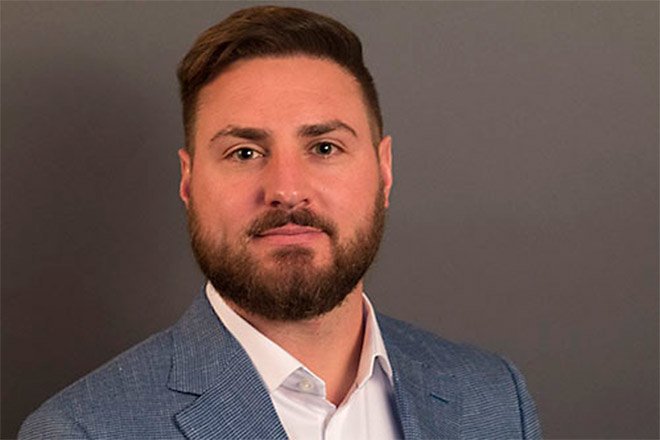
December 14, 2017
It may seem that every new year there are brand new nuggets of advice about how to lose weight, get healthy and eat well – everything from eating more plant-based meals to cutting back on gluten and dairy. It’s easy to get overwhelmed by the onslaught of advice and mixed messages.
According to Tony Frick, president and CEO of Global Fit, a Philly-based company that provides wellness solutions to employers and employees around the country, there is no singular plan that fits every person’s lifestyle. The key to health and wellness, he insists, is building a plan that works just for you.
“We encourage people to start small and then scale,” says Frick, who was named to the Philadelphia Business Journal’s “40 Under 40” list this year for his more than two decades of work customizing health and wellness solutions for businesses. As such, he’s been on top of all of the latest health and wellness trends – from the most effective to the most ridiculous.
And while it’s true he says that cities like New York and San Francisco have certainly been leading the way in terms of how employers are encouraging healthy behavior through incentives, the idea is spreading. While millennials have certainly helped spur the trend by demanding things like gym memberships and other value-added benefits at work, people ages 60-plus are actually joining gyms and community health centers at record numbers. There is no one formula that fits everyone’s health goals, he says. But in 2018, there are a few easy ways to get started:
1. Strap on a wearable device: Not only do wearable devices like the FitBit track movement, whether you’re on a run or just walking the steps at the office, they have become more affordable and fashionable. “It’s easy and cost effective for people to track data and set realistic goals,” says Frick. “You don’t have to spend $300 for an Apple Watch when there are low cost $30 and $40 options.”
Wearable trackers, says Frick, also make it easier than ever to create fitness goals and stick to them. “We’re finding these little motivations from tech devices help put health front and center in people’s minds. And on the backend we can track this data. As folks hit milestones it’s continuing to reinforce healthy behavior.”
Tip: Check out fitness apps like My Fitness Pal, Pear Personal Coach, Lose It and Map My Run that can they be customized to unique needs based on age, weight and fitness goals. Not only does study after study prove that people who use these apps lose weight more constantly, but they maintain their goals in the long run. There are even apps like FitRadio that create music playlists to keep you pumped.
2. Pick one goal and stick to it: For 25 years Frick has been developing plans for both employers and insurance companies that focus on everything from incentivizing gym memberships to joining smoking cessation groups and seeking nutritional guidance. He’s learned that people succeed in meeting their health and wellness goals when they are realistic about what they hope to achieve. In other words, he says, “pick one thing – like taking a walk a day or drinking more water – and slowly scale those challenges.”
For a plan to work it needs to be “challenging but achievable,” says Frick. “It’s a journey, not a destination. The hardest thing for most folks is taking the first step to a healthy lifestyle, or getting back on the horse after they’ve fallen off.”
He encourages people to set realistic goals that can be built on as they progress naturally. “One size does not fit all for employers and employees,” he says. For example: One company might be struggling with a high rate of obesity among staff while others may want to discourage smoking. Still others may be more sedentary at their desks.
“It’s all about personalization and customization,” says Frick. “If you’re a 22-year-old Cross Fit enthusiast, the incentives should be a lot different than from a 66-year-old Medicare recipient. If you spent 2017 only working out a few times don’t make your resolution to participate in an Iron Man.”
Tip: Ask your human resources department if there are any incentives to getting in shape, like discounted gym memberships, monetary reimbursements or access to free nutrition programs. As the chair of the board of MANNA, a nonprofit organization that serves meals to people living with life-threatening illnesses in the Philly region, Frick can’t say enough about food as medicine. Many companies, through their insurance providers, offer a range of surprising incentives to employees. The goal, says Frick, is to lower insurance rates by encouraging employees to become healthier overall. It’s a win for everybody.
 Photo courtesy/Tony Frick
Photo courtesy/Tony Frick“There is no singular plan that fits every person’s lifestyle,” says Tony Frick, president and CEO of Global Fit, a Philly-based company that provides wellness solutions to employers and employees around the country. “We encourage people to start small and then scale.”
3. Take a nap at work: You can blame Silicon Valley for the trend in sleeping on the job. Startup companies that rely on smart young talent to work exceedingly long days have begun to encourage their employees to get some shuteye at the office. And depending on the type of job you have, this can be a great idea, says Frick.
“This will work really well for certain organizations,” Frick says, touting the benefits of what he calls a “nap-positive culture.” Even an hour-long nap can increase productivity. Of course, it all depends on the workplace. While he can easily imagine someone at an agency grabbing some winks while working on a huge account, he doesn’t predict that the construction workers working high atop the new Comcast building will be caught sleeping on the job anytime soon. “It’s all about the needs of the company,” says Frick. “It’s definitely not for everyone.”
Tip: More companies are offering things like free yoga and meditation sessions during the workday to cut back on stress and to ultimately increase productivity. If napping is frowned upon in your office (boo!), ask about other programs that may be a better fit for corporate culture. And if your company doesn’t presently offer any viable options, consider working with HR to implement a program that appeals to both you and your co-workers. Namaste.
“At the end of 2018, you might be able to say, ‘I’ve changed 30 things in my life.' Results are so important.” – Tony Frick
4. Look for results: The goal at the end of any yearlong health and wellness regiment is to be able to look back and see the results. In some cases this might mean losing weight. More extreme examples could be reversing Type 2 diabetes with exercise and diet, or even lowering blood pressure and cholesterol so as to not have to take expensive daily medications.
Frick says in his own experience, most people who create and stick to realistic plans can look back and see a real change. “At the end of 2018, you might be able to say, ‘I’ve changed 30 things in my life,’” he says. “Results are so important.”
But Frick warns it can take time to actually see the results no matter how dedicated. “You’re going to add muscle quicker,” he explains. “You might gain weight and wonder what’s happening. But pay attention to little victories throughout the day. Remind yourself to track goals.”
Tip: Rethink the corporate culture. At GlobalFit, Frick initiated stretch breaks twice a day and wellness events twice a month. Employees also have access to healthy snacks. “They can grab an apple rather than a Snickers bar,” he says. “These little things are quick and easy wins, and they add up over the long term.”
5. Start working out at home: “If you haven’t been to the gym and you’re just getting back into it,” says Frick. “It can be daunting.” That’s why he encourages people to start the process in the privacy of their own homes. There are so many online and cable television programs that offer workouts. It’s a great way to get started, particularly if someone is anxious about working out in front of other people.
“Try some on-demand content,” he says. “And then scale up.” Beginner yoga and Cross Fit classes online are two easy ways to build confidence even before ever stepping foot into a gym.
“The gym can be a stress-inducing experience and it shouldn’t be,” says Frick. “But there are a whole host of products and solutions to meet people where they are and to build confidence.” He says starting at home can dissuade you from giving up.
Tip: Encourage your whole family to get on board with a fitness plan. “Many times incentive programs are not just for an employee, but also extend to a spouse and other family members,” says Frick. The more communal support there is, the more likely everyone will help motivate one another.